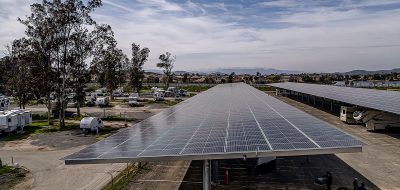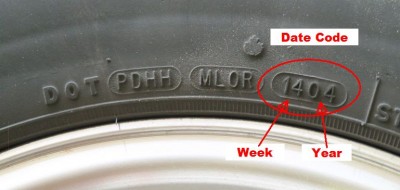 If you enjoy boondocking, tailgating or visiting areas where pedestal power is not available or generator use is prohibited, then clean, quiet solar power may be the energy source you’ve been seeking.
If you enjoy boondocking, tailgating or visiting areas where pedestal power is not available or generator use is prohibited, then clean, quiet solar power may be the energy source you’ve been seeking.
A solar power system lets you enjoy the benefits of clean, quiet, portable power that will last over 20 years with only minimum maintenance, and in most cases will pay for itself within a few years. It’s an investment that gives you still more options for enjoying the great outdoors.
With solar power, photovoltaic solar panels convert the sun’s rays into usable electricity. The electrical energy produced by the solar panel is transferred to a 12-volt battery and can then be converted from 12-volt DC battery power to 110-volt AC power by an inverter.
How Solar Works
Photovoltaic (PV) systems produce electricity when exposed to sunlight, which is composed of particles of energy called photons. When sunlight strikes a PV materials photons pass through, are reflected or are absorbed. If the photon is absorbed, its energy is transferred to an electron in an atom of the PV material With its new-found energy, the electron is able to escape from its normal position in orbit around that atom, becoming part of and augmenting the current in an electrical circuit. This “photovoltaic effect” is how sunlight is converted into electricity.
The primary building block of a PV system is the PV eel~ typically about 3″ x 3” and A single PV cell produces only a small amount of electricity; however, by connecting several cells to form modules, connecting modules to form arrays, and connecting arrays, you can build a PV system to meet almost any power need.
 Controlling Power
Controlling Power
Positioned between the PV array and the 12-volt battery, a charge controller monitors the charge coming from the solarpanel to the battery, protecting the battery from overcharging during the sunny daylight hours and from discharging during the night or bad weather. It can also let you know when the battery is fully charged. The size of the charge controller you need depends on the amount of electrical current created by the solar panel or group of panels.
With the right system set up for your electrical needs–solar Panel(s), charge controller, 12-volt battery (deep cycle batteries are best) and an inverter-you can camp just about anywhere there is sunshine.
What Size System?
Determining how many PV panels you need depends on how much energy you consume and your access to sunshine. A load profile of your projected electricity use in kilowatts per hour will help in deciding how many panels you need. This can be done by determining how many hours you will use the appliance in a day. By adding up the total amount of watts needed, you can determine how large a panel or how many solar panels you will need. Use the formula Watts= Volts x Amps to help determine the wattage required for each appliance. To help you determining the size of your RV solar array, use the solar calculator at CampingWorld.com/solarcalculator.
Remember, a solar panel’s maximum output of energy per hour depends on sunshine intensity and the panel’s rated wattage. The higher the wattage produced, the faster your battery will change, and the more power you inverter will have to convert to household electricity.




Anonymous
Very informative article, thanks so much for sharing your knowledge of solar products. Electricity is not always available on adventures, and solar is the way to go! I say – let the sun do the work!
Hiking Grandma
[email protected]